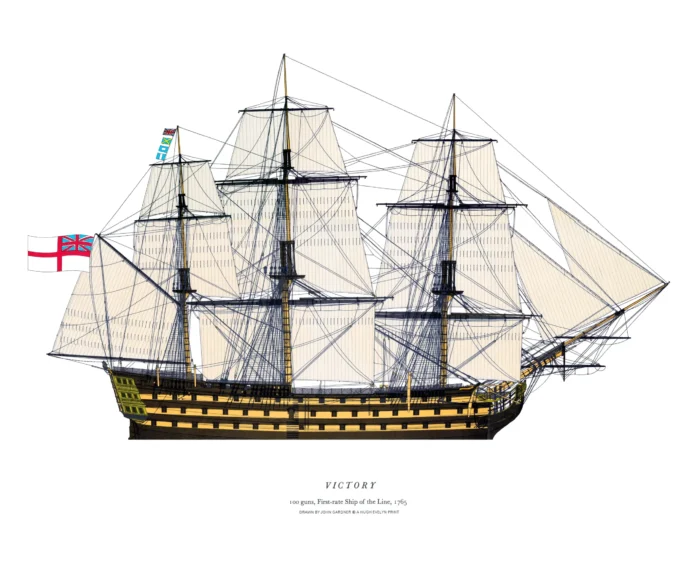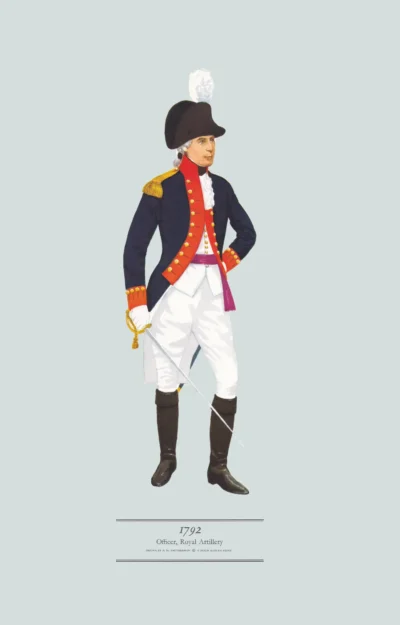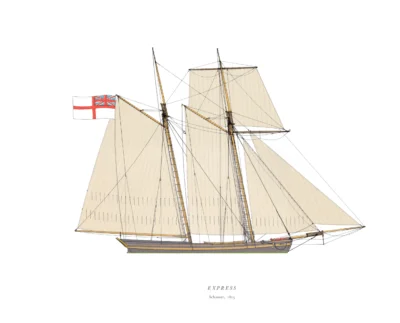HMS Victory, 1765
Original price was: £25.00.£17.50Current price is: £17.50.
Victory: Nelson’s flagship at the Battle of Trafalgar, 1805 (scroll down for a more detailed Description)
Published 1968 by © Hugh Evelyn Limited; drawn by Scottish marine artist John Gardner (1930-2010)
Size: c. 44 x 35 cm [17″ x 14″] (may vary slightly from printers’ cut 50 years ago)
Printed on high white matt cardstock 144 g/sm2.
Print is LARGE size – shipping is the same for 1 to 10 prints (based on largest print size in your order) – see Shipping & Returns.
In stock
Description
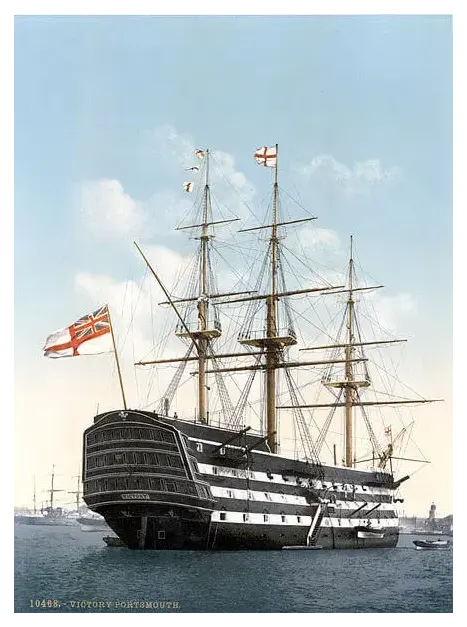
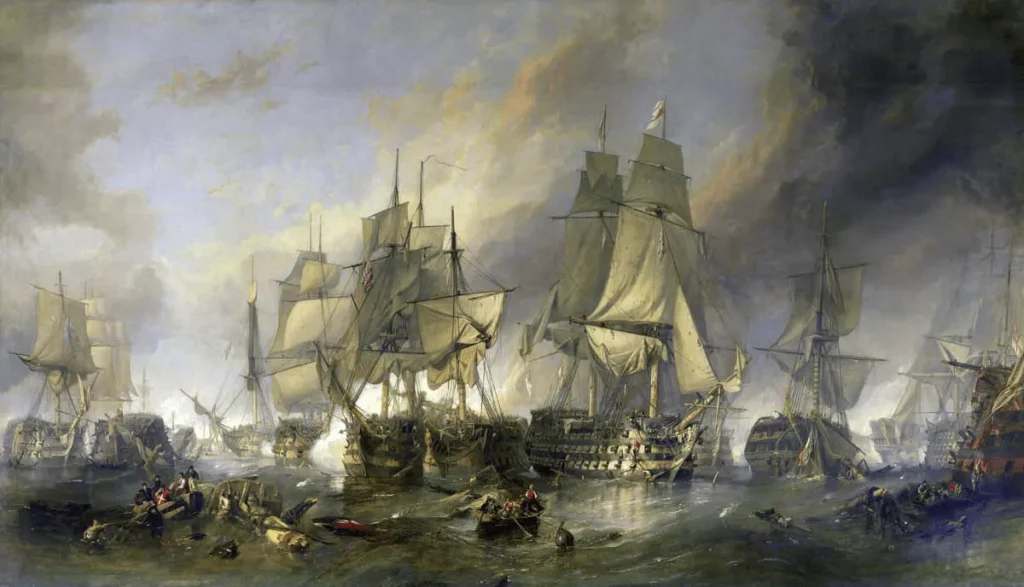
Victory:
Full Rigged First Rateship of the line;
Built: Royal Dockyard Chatham, Kent, UK;
Ordered: 1758; Laid: 1759; Launched: 1765; Commissioned: 1778;
3,500 LTons; Leingth: 227′ 6″ (69.3M); Beam: 51′ 10″ (15.8 M); Draught: 28′ 9″ (8.8 M);
Armament: 104 Guns: 30 x 32 lbs (15 Kg); 28 x 25 lb (11 Kg); 44 x 12lb (5 Kg); 2 x 68 lb (31 Kg) carronades;
Sail: 6,510 Yds² (5,440 M²);
HMS Victory is a 104-gun First Rate. First Rates were built at Royal Dockyards. There were 7, Chatham being the most important. Victory‘s keel was laid there in July 1759. She was launched on 7th May 1765 and enjoyed an extraordinary career: She fought at the Siege of Gibraltar (1782); she was Keppel’s flagship at The Battle of Ushant (1778 and 1780), Howe’s at the Battle of Cape Spartel (1782), Jervis’s at the Battle of Cape St Vincent (1797) and Nelson’s at the Battle of Trafalgar (1805). Trafalgar was fought against the combined French and Spanish fleets on 21st October 1805. Although victorious, Nelson was shot by a French sniper during the battle and died at 4:40 pm shortly after his Flag Captain, Sir Thomas Hardy, had bid farewell to his revered friend and Commander. In 1798 she had been declared unseaworthy – to be converted to hospital ship, but HMS Impregnable, another First Rate, was lost on the Chichester shoals soon after, so Victory was ordered reconditioned, but effectively rebuilt and painted in Nelson Chequer – the colour scheme used by him in battle: bands of black and yellow along the hull, broken by black gunports as in this, our own image of Victory. The underside of the gunports were black so when closed the hull appeared striped, and when opened chequered, “ready for action”. A lack of “chequering”, seen over distance, indicated peaceful “intent” – necessary when sailing into friendly harbours. After 1815 vessels were painted white and black. As the oldest vessel in the world still in commission she remains at Portsmouth as flagship of the First Sea Lord (the senior officer of the Royal Navy).
Additional information
| Weight | 0.0223 kg |
|---|---|
| Dimensions | 44 × 35.5 cm |

